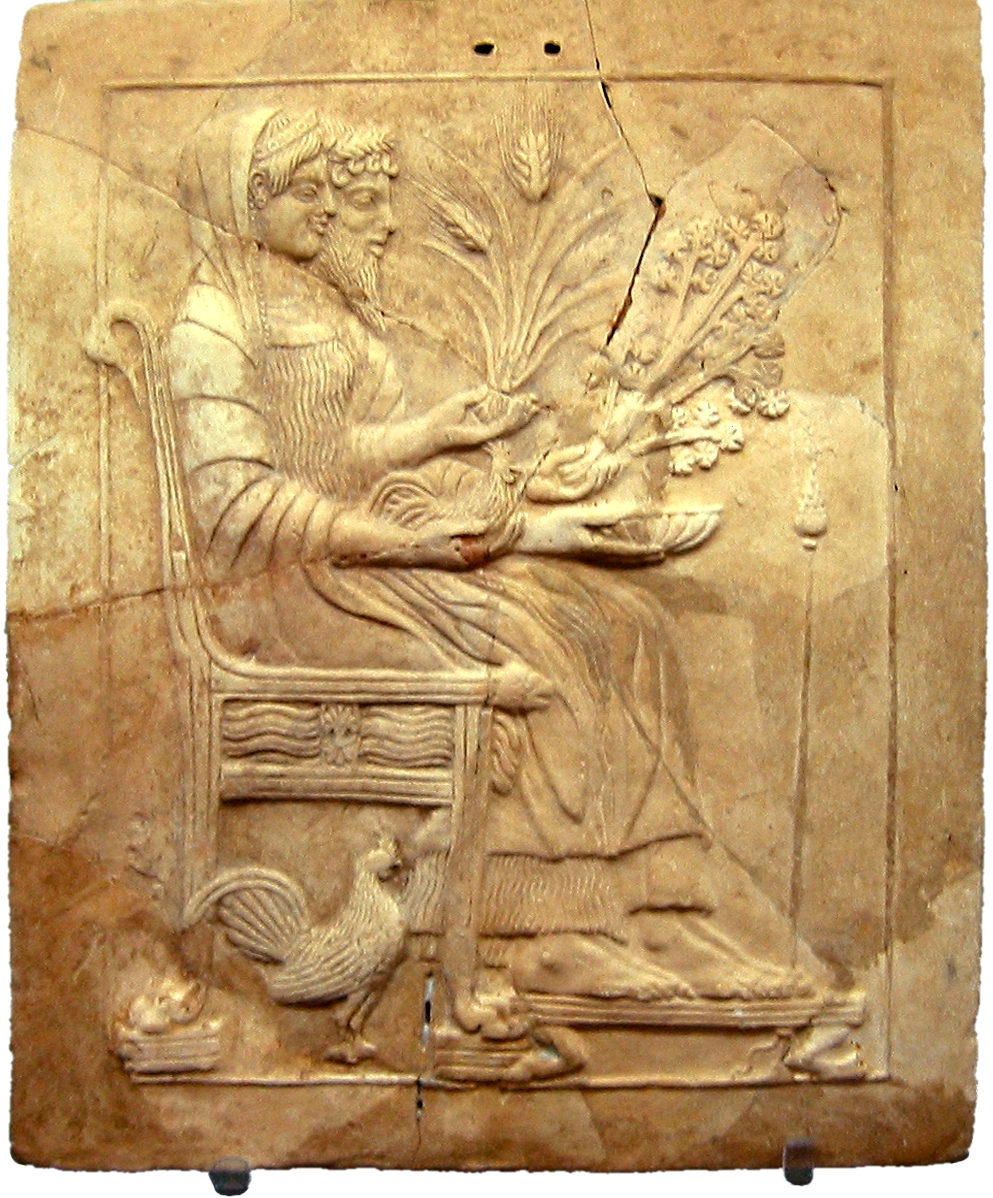There is a sanctuary in the mountains of Calabria where the mafia plots and ancient rites are carried out in honor of the Goddess--once Persephone, now A Madonna dâ Muntagna, or the Madonna of the Mountain. Until recently, her feast on September 2 was celebrated with the strewing of grain and flowers (cf. the Greek rite of aparchai), as well as the sacrifice and cooking of goats.
In an ancient Greek settlement at nearby Locri, two great sanctuaries once stood. One was dedicated to Persephone. The other was dedicated to Aphrodite. It may astonish some to learn that these two goddesses were syncretized here:
According to Diodorus Siculus (27.4.2), Persephone’s sanctuary was considered “the most renowned temple in Italy, preserved as holy for all time by the inhabitants.” Livy (29.18.3) reports that in 204 B.C.E. envoys from Locri addressing the Roman Senate could assume that their audience was fully aware of its religious importance. One of the most striking aspects of the worship of Persephone at Locri, at least to modern observers, is its conflation with the cult of Aphrodite, as evidenced by the type-scenes found on the pinakes. In this series of images, which are manifestly associated with the ritual activities of women and are frequently regarded as “wedding ex-votos”, the symbolism of the two deities is amalgamated, often provoking considerable controversy as to which goddess is meant. ... Is the relation of the two antithetical, with Persephone presiding over the domain of legitimate marriage and child rearing, and Aphrodite standing for socially “illicit and ‘aberrant’” modes of sexuality, as Sourvinou-Inwood proposes? Or are their operations wholly integrated, so that the goddesses, in MacLachlan’s formulation, “meet at the intersection of death and sexuality”? Redfield postulates that the Locrian fusion of nuptial and funerary imagery reflects an Orphic concept of marriage and death as parallel rites of passage, each involving transformation to a blessed state. Certainly the unique character of women’s religious activity there, involving joint worship of deities normally treated as quite distinct, confirms the importance of Sourvinou-Inwood’s stipulation that study of Greek divine personalities must take account of local difference and base its findings upon a non-Panhellenic, community-oriented approach to cult.
From Marilyn B. Skinner, "Nossis and Women’s Cult at Locri"
The archaeological record at Polsi shows pinakes, or votive clay tablets manufactured by Hellenic settlers from Locri, so we know these locations were connected somehow. A Locrian pinax showing Persephone and her husband Hades, Queen and King of the Underworld, appears below.
I'm not going to lie: mostly, I'm writing about this Madonna because I just discovered this amazing album of vintage devotional songs sung in her honor. In particular, track #4, "Zampognara pi Maria SS." is LIT. (Catholit?)
In addition to the devotional music played in honor of the Madonna, pilgrims to the sanctuary at Polsi will dance and play the tarantella. You can get a taste for this regional tarantella in this video:


